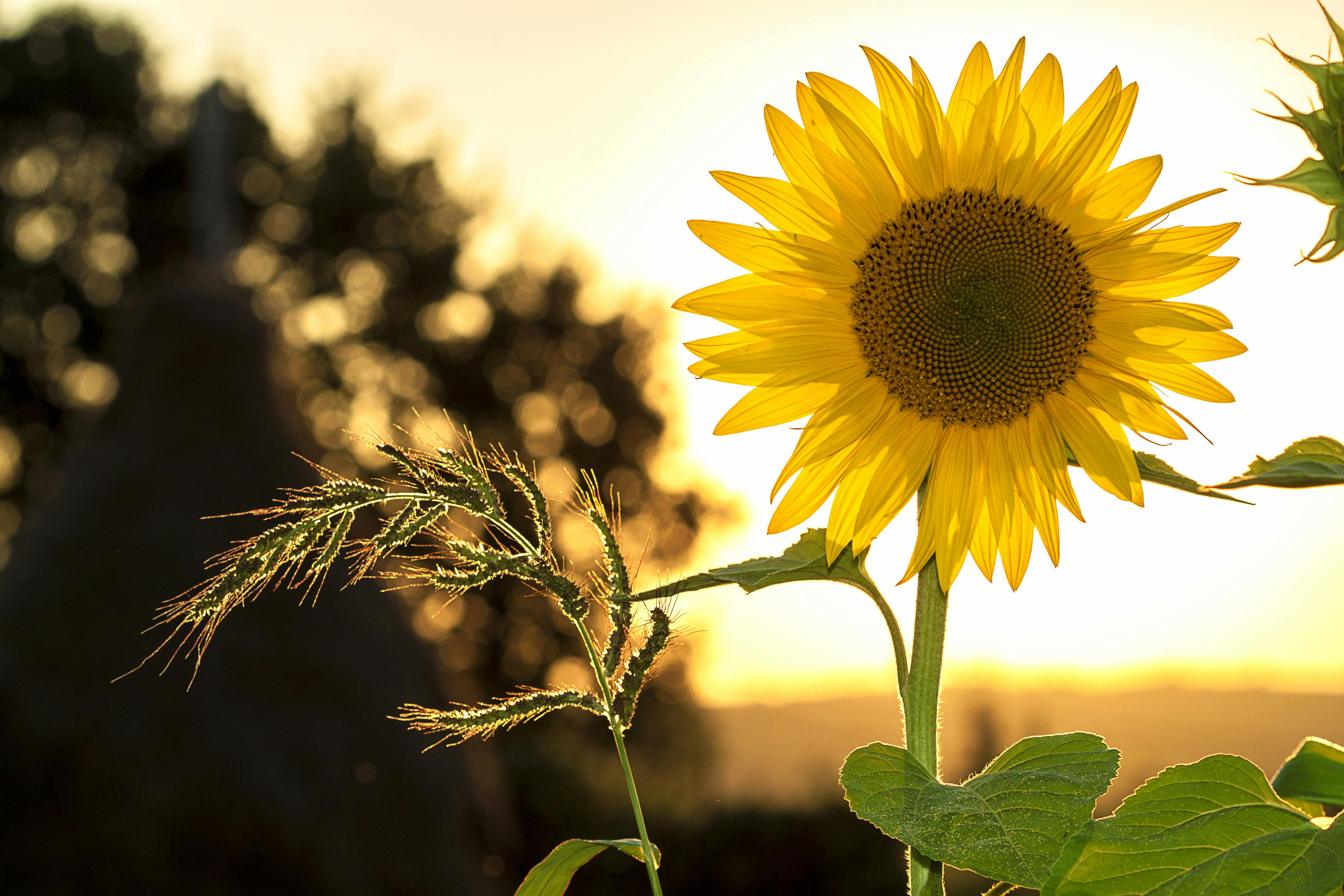Potato plants are one of the most popular vegetables grown in gardens across the world. They are relatively easy to grow and can be harvested in a short amount of time. But how much sunlight does a potato plant need to produce a successful crop? This article will discuss the importance of sunlight for potato plants, how much light they need, and how to best use sunlight for growing potatoes.Potato plants need at least 6-8 hours of direct sunlight each day in order to thrive and produce a good yield. Allowing the potato plants to get less than 6 hours of direct sunlight can result in stunted growth and poor yields.
Sunlight Requirements For A Potato Plant
Potato plants require full sun to produce a good crop of potatoes. Sunlight is essential for potatoes, as it helps to develop large and healthy tubers. The ideal amount of sunlight for potato plants is at least 6 hours per day, with 8-10 hours being even better. Without adequate sunshine, the yields will be smaller and the potatoes won’t be of a very good quality. If you live in an area that gets less than 6 hours of sunshine daily, you should consider planting your potatoes in a container or growing bed that can be moved around to ensure that they get enough light.
It’s also important to note that too much sunlight can be detrimental to potato plants. Too much direct sunlight can cause the leaves to scorch and wither away, leaving the plant vulnerable to disease and pests. To prevent this from happening, you should provide some shade during the hottest parts of the day or choose an area that gets plenty of indirect sunlight throughout the day.
How Much Sun Does A Potato Plant Need To Grow?
Potato plants need plenty of sunlight to grow and produce a healthy yield. The amount of sunlight needed will vary depending on the variety of potato and the climate in which they are grown. In general, potatoes need at least six hours of direct sunlight per day to thrive.
If your plants are growing in an area with limited light, you can supplement with artificial lighting for an additional two to four hours per day. This can be beneficial for cooler climates or when growing indoors.
When the temperature is high, it is important to provide adequate shade for your potato plants so that they don’t become too hot and stressed out. You can do this by using a row cover or other shade cloths to protect the plant from excessive heat and sun exposure.
It is also important to ensure that your potato plants are not getting too much water or too little water. Too much water can cause the potatoes to rot, while too little water can cause them to become stunted and produce smaller yields. Aim for about one inch of water per week during the growing season, either through rainfall or manual watering.
In conclusion, potatoes need at least six hours of direct sunlight every day in order to grow properly and produce a healthy yield. If you live in an area with limited light, supplemental artificial lighting may be necessary for optimal growth. Additionally, make sure that your potato plants have adequate shade during hot weather and that they are getting enough water without becoming over-watered or under-watered.
What Is The Optimal Sunlight For Growing Potatoes?
Potatoes need a lot of sunlight in order to grow properly. The optimal amount of sunlight for growing potatoes is at least six hours per day. This will ensure that the potatoes get enough light for photosynthesis and promote healthy growth. It is important to note that too much sunlight can cause issues, such as sunburn, which can lead to stunted growth and even crop failure. Too little sunlight can also be a problem, leading to weak stems and leaves, as well as low yields. Therefore, it is important to find the right balance of sunlight for your potatoes.
It is also important to consider the type of potato you are growing when determining how much sunlight they need. Some varieties need more or less light than others, so it is important to do your research before planting. Additionally, soil temperature and moisture levels should also be taken into consideration when determining the optimal amount of sunlight for growing potatoes. By understanding these factors and providing your potatoes with the right environment, you can ensure healthy growth and a successful harvest.
How Many Hours Of Sunlight Do Potatoes Need Each Day?
Potatoes are an incredibly versatile and hardy crop, but they require some sunlight in order to flourish. On average, potatoes need at least six hours of direct sunlight each day in order to grow properly and reach their full potential. Without enough sunlight, potatoes may not reach their full size or may produce fewer tubers than usual. However, if the temperature is too hot or the soil is too dry, the potatoes may suffer from sunburn or other issues due to too much sunlight exposure.
In areas with long summer days, potatoes can benefit from up to eight or nine hours of direct sunlight each day. In areas with shorter days or cooler temperatures, six hours of direct sunlight is usually sufficient for growing healthy potatoes. It’s important to note that the amount of light needed for optimal growth can vary depending on the variety of potato being grown.
It’s also important to keep in mind that not all sunlight is created equal. Potatoes prefer bright, direct sunlight rather than indirect sunlight or shade. If your garden receives mostly indirect light throughout the day, it may be beneficial to supplement with artificial lighting such as grow lights or fluorescent bulbs in order to provide your potato plants with enough light for optimal growth and health.
Overall, potatoes need at least six hours of direct sunlight each day in order to flourish and reach their full potential. Depending on the variety of potato being grown and environmental factors such as temperature and soil moisture levels, this number can range from six to eight or nine hours of direct sunshine per day.

What Is The Best Time Of Day To Give Potatoes Sunlight?
Potatoes need plenty of sunlight to grow well, but the best time of day to give them that light will depend on the climate. In areas with cooler climates, potatoes should receive their sunlight in the morning hours when temperatures are milder. This will help prevent the leaves from burning in the afternoon heat. In hotter climates, potatoes should receive their sunlight later in the day when temperatures are cooler.
When potatoes are planted in containers, they should be placed in a sunny spot for six to eight hours per day. The containers should be rotated throughout the day so that each side receives equal amounts of sun. This will help ensure that all sides of the potato plant receive enough light.
It’s also important to remember that too much sunlight can damage potato plants. If leaves start to turn yellow or curl up, it’s a sign that they’re getting too much sun and need to be moved into a shadier spot. If potatoes are planted in a garden bed, it’s important to mulch around them during hot summer days to provide some shade and protect them from sunburn.
Overall, providing potatoes with enough sunlight is essential for healthy growth and development. The best time of day for your potato plants will depend on your climate, but either morning or late afternoon light is ideal for most areas. Be sure to keep an eye out for signs of sunburn and adjust accordingly!
How Much Shade Can Potato Plants Tolerate?
Potato plants can tolerate some shade, but they prefer full sun. While potatoes can grow in partial shade, they may not produce as many potatoes as when grown in full sun. The best location for growing potatoes is an area that receives at least six hours of direct sunlight a day. If this is not possible, then the plants should be placed in the brightest and sunniest area available.
When grown in partial shade, potato plants may require more frequent watering and fertilization to ensure good yields. They will also need more support from stakes or cages to keep them upright as the stems are likely to be weaker due to lack of sunlight.
Although potato plants grown in shade do not produce as many potatoes as those grown in full sun, they can still provide a decent harvest with some extra care and attention. As long as the soil is well-drained and there is enough sunlight for at least six hours a day, potatoes can be successfully grown in partial shade.
It is important to remember that too much shade can cause stunted growth and poor yields for potato plants, so it is important to find the right balance between sufficient light and protection from hot midday sun.
What Are The Risks Of Over-Exposure To Sunlight For Potato Plants?
Potato plants are very sensitive to over-exposure to sunlight, as it can lead to a variety of issues. Too much sunlight can cause the leaves of the potato plant to become discolored, with yellowing or scorching of the edges being common. This damage can be permanent, and if left unchecked can cause the plant’s leaves to die off. Too much sunlight can also lead to stunted growth and weakened root systems which can reduce yield significantly. Furthermore, too much sun can cause potatoes themselves to become sunburned, reducing their quality and making them unsuitable for sale.
In addition to the physical damage that too much sun can cause, it also increases the risk of disease for potato plants. Fungal diseases such as late blight thrive in warmer temperatures which are created by excessive exposure to sunlight. These diseases are highly contagious and difficult to control once they have taken hold, so preventing them is essential for successful potato harvests.
Finally, over-exposure to sunlight can also deplete levels of soil moisture in and around potato plants, making them more prone to drought-like conditions. Drought causes potatoes to become dry and shriveled, reducing their value and marketability significantly. As such it is important for growers to take steps such as mulching or irrigation in order to ensure that soil moisture levels remain adequate even when exposed to prolonged periods of direct sunlight.

Conclusion
In conclusion, it is clear that potato plants require a moderate amount of sunlight to grow and produce healthy yields. Generally, they should receive around 5-7 hours of direct sunlight per day. It is important to note that potato plants may require more or less sunlight depending on the climate and soil conditions. When conditions are too hot or too cold, they may need more or less sunlight respectively.
It is also important to remember that potatoes are sensitive to light intensity and can be damaged by too much direct sunlight. Therefore, it is best to provide shade during peak hours in order to protect the plants from potential sunburn.
Overall, ensure your potato plants receive optimal amounts of sunlight by monitoring temperature and light intensity levels, as well as providing shade when necessary. With proper sun exposure, you can expect healthy yields from your potato plants!

